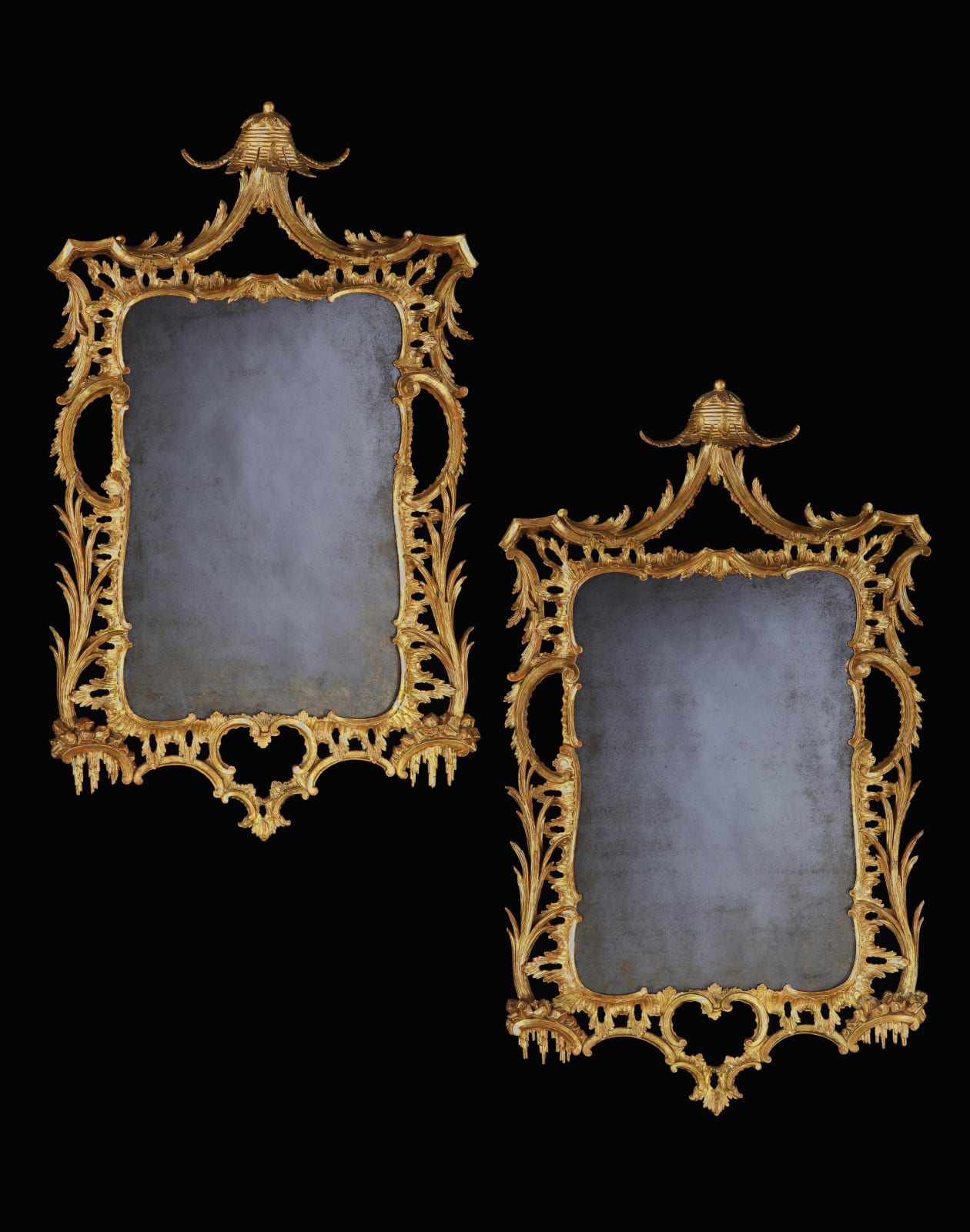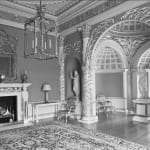A PAIR OF GEORGE III CARVED AND GILDED MIRRORS
Height: 55" 140 cm
A particularly fine and large-sized pair of early George III carved and gilded gesso mirrors with shaped plates; the upper part surmounted by a carved pagoda; the pierced frames carved with rockwork, C-scrolls, reeds, icicles, fronds and other chinoiserie elements.
These fabulous mirrors are an impressive size and of wonderful proportions, incorporating many of the design elements of architect William Kent and his pupil John Vardy.
In 1756 Vardy was commissioned by the 1st Earl Spencer (b. 1734 – d. 1783) to design and build Spencer House, and he is responsible for the fine external elevations of the house. In addition, Vardy also designed much of the interior of Spencer House and was commissioned to design and execute pieces of furniture.
One of the most notable rooms was the Palm Reception Room on the ground floor. The palm trees were chosen for their symbolism of marital fertility and to underline the eighteenth-century belief in the close connection between classical architecture, nature and the natural world. The present pair of mirrors were clearly heavily influenced by the design and contents of this room.
Vardy and Kent were two of the designers and architects instrumental in the naturalistic movement becoming so fashionable in England during the mid part of the eighteenth century.



